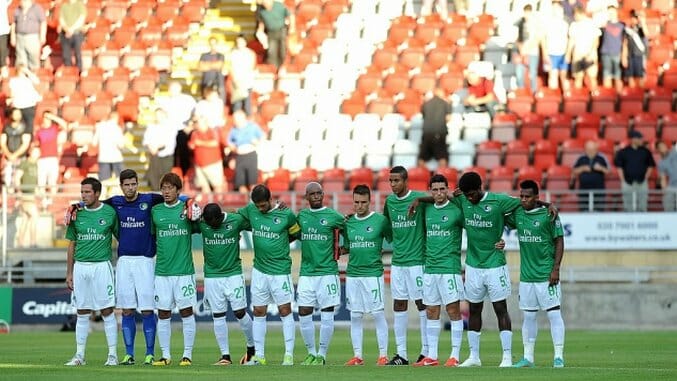
The American soccer landscape could look very different next year.
The North American Soccer League, the country’s second division men’s soccer league and spiritual descendent of the American top-flight league from the 1970s and 80s, is facing enormous financial and organizational pressure. And, ahead of a potentially fate-deciding meeting this week in New York, this could be the beginning of the end.
The league’s biggest immediate problem is that as many as five teams are on their way out the door for one reason or another. Minnesota United, who have been responsible for some of the league’s highest attendance figures this season, are joining MLS next season. Sports Illustrated is reporting that the Ottawa Fury are likely moving to United Soccer League (the third tier in American soccer) next season and that the Tampa Bay Rowdies will likely follow suit.
Meanwhile, the Fort Lauderdale Strikers are in the midst of a massive financial crisis. The team’s Brazilian owners issued a statement saying that they would no longer fund the team’s operations, leaving employees and vendors to twist in the win. The league will vote next week on a measure to cover the team’s financial obligations through the rest of 2016, a move that could cost them as much as $1.75 million.
And of course, there’s the ongoing saga at Rayo OKC, which we’ve previously reported on.
SI is reporting that at least four clubs haven’t paid their league bonds for next season, fuelling fears that a mass exodus is imminent.
The clubs that would remain aren’t without problems of their own. The New York Cosmos, in many ways seen as the league’s flagship club owing to their storied (if complicated) history, have seen their attendance figures drop at Hofstra University. Their plans for a new stadium have appeared to have fallen through and the team may end up playing their games next season— if there is a next season— at MCU Park in Coney Island, home of the minor league baseball team Brooklyn Cyclones.
The league pulled off a major coup earlier this year when they announced new broadcast deals with beIN Sports and CBS Sports Network, but the ratings that have been publicized have been somewhat middling. This isn’t entirely surprising for a new sports broadcast property— it’s not like MLS had stellar ratings its first few years— but there’s a sense that the NASL really needed to hit one out of the park. Combine that with decreasing attendance figures across the board and this doesn’t seem to bode well.
NASL Commissioner Bill Peterson has maintained that the league’s second division status makes it hard to compete for quality players and broadcast revenue. The league has indicated that it wants to at least share D1 status with MLS and was prepared to fight US Soccer for it last year. But SI is reporting that the league has backed down from their threats of legal action and are prepared to accept whatever decision is handed down this week at a meeting between the USSF and league officials.
The USL has been making a similar argument lately. They believe that between the brand appeal lent by MLS Reserve squads and runaway success stories like FC Cincinnati, they have at least as strong a claim on Division 2 status as the NASL. Their proposal for D2 status, as well as the NASL’s original D1 appeal, will be heard this week, although it’s unlikely either will be approved.
As Strauss wrote in the SI piece, it’s not in US Soccer’s interests to let the NASL fold or even barely get by because, at the very least, it doesn’t reflect well on American soccer. Despite the explosive growth in the domestic soccer landscape over the past two decades— from MLS becoming sustainable to the USMNT finally being taken seriously to the USWNT’s continued success— the organization still finds itself having to prove that the sport can be viable (and profitable) in this country. Yet it’s unclear what, if anything, the USSF can do to help the NASL.
If NASL does survive into next year, they at least have a plan to replenish their numbers. Former Chicago Fire owner Peter Wilt is forging ahead with plans for an NASL team in the Second City. The league is also in talks with several different ownership groups— three on the west coast, two out east— that have expressed interest in investing in the league. The expansion fee is reportedly under $5 million, which makes it a potentially less risky bet compared to MLS.
Between a low barrier of entry for potential investors, several possible new franchises coming down the pike, and perhaps a helping hand from US Soccer, there is conceivably light at the end of the tunnel for the NASL. But with a looming financial crisis and a massive contraction after this season, it’s entirely possible that the light is an oncoming train.